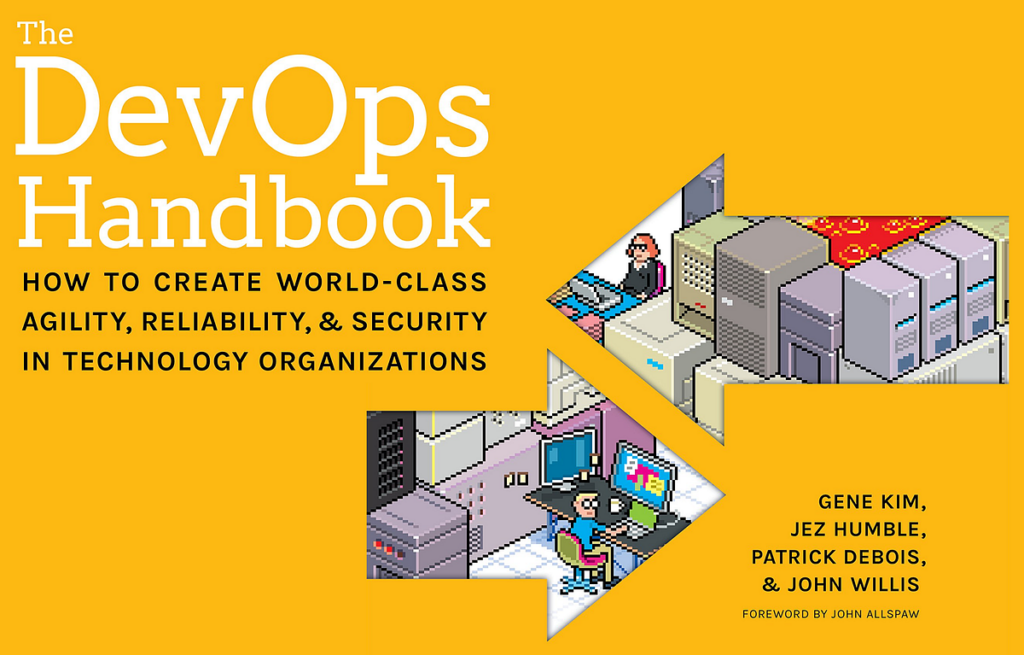The DevOps Handbook is a book by Gene Kim, Jez Humble, Patrick Debois and John Willis that outlines a set of practices that can help organizations improve their agility, reliability, and security. The book is based on the experiences of the authors at companies such as Amazon, Netflix, and Etsy.

Core Principles of DevOps:
- Culture: Foster a culture of collaboration and trust where teams work together towards common goals such as improving efficiency and innovation. An example might be a company that encourages cross-functional teams to share knowledge and take joint responsibility for delivering value to customers.
- Automation: Utilize automation tools and processes to streamline workflows and reduce manual errors. For instance, using tools like Jenkins or GitLab CI to implement automated testing and deployment pipelines.
- Continuous Improvement: Embrace a culture of continuous evaluation and improvement of workflows and practices. For example, teams regularly conduct retrospectives, identify areas for improvement, and implement changes accordingly.
- Measurement: Use metrics and data to assess performance and guide improvement efforts. For instance, tracking key performance indicators (KPIs) like deployment frequency, lead time, and mean time to repair (MTTR) to measure the effectiveness of DevOps practices.
Key Practices:
- Continuous Integration (CI): Frequently integrate code into a shared repository and automatically test it to ensure code quality. For example, a development team using Travis CI to automatically build and test code changes when they are committed to the repository.
- Continuous Delivery (CD): Automate the process of delivering software to production environments, enabling rapid and reliable releases. For instance, using tools like Spinnaker or Harness to implement continuous delivery pipelines that automate deployment, testing, and monitoring.
- Infrastructure as Code (IaC): Use code to manage and configure infrastructure, achieving automation and repeatability. For example, using Terraform to define infrastructure resources like servers and networks in version-controlled configuration files.
- Elastic Architecture: Build highly available and resilient systems to handle failures and load fluctuations. For instance, designing applications to run on cloud platforms like AWS or Azure, leveraging autoscaling and load balancing to handle traffic spikes.
- Security and Compliance: Integrate security and compliance into DevOps workflows as essential considerations. For example, implementing automated security checks and compliance audits as part of the CI/CD pipeline to ensure code changes meet security and regulatory requirements.
- Knowledge Sharing and Learning: Encourage team members to share knowledge and skills through collaboration and training. For instance, organizing regular lunch-and-learns where team members can present new technologies or share lessons learned from recent projects.
- Organizational Culture Change: Emphasize the role of organizational leadership in driving cultural change and adopting DevOps practices. For example, establishing cross-functional teams composed of representatives from development, operations, and other relevant departments to foster collaboration and alignment towards common goals.
Key Takeaways
- DevOps is not a tool or technology, but rather a culture and way of working.
- The goal of DevOps is to improve the agility, reliability, and security of organizations.
- DevOps success requires breaking down silos between development and operations departments and establishing a culture of collaboration and communication.
- DevOps implementation requires continuous learning and improvement.







Comments NOTHING